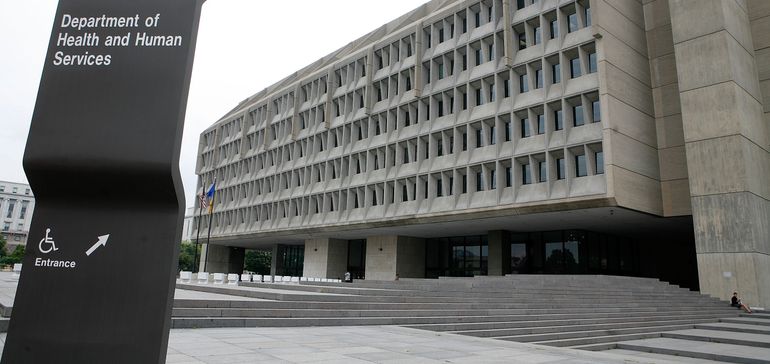[ad_1]
The CMS outlined potential guidance last week on issues like healthcare equity and climate change in its final inpatient payment rule as the federal government heightens its healthcare oversight on social issues.
In the report, the CMS released comments that it received after soliciting public input during its proposed rule in April.
The feedback on climate change and health equity comes as organizations like the American Medical Association released policy proposals this year aimed at advocating for environmental justice and supporting workplaces that promote wearing cultural headwear and natural hairstyles.
Climate change
The agency in its final rule outlined the effects of climate change on patients and hospitals, citing a consensus statement signed by over 200 medical journals and calling climate change the “greatest threat to global public health of the coming century.”
The outline comes as climate change has become an increasing priority for federal health agencies.
Last year, the HHS announced the creation of the new Office of Climate Change and Health Equity, which rolled out emissions requirements for hospitals and pledged to work with local hospital networks.
In its proposed rule, the CMS asked for feedback on how to maintain “uninterrupted operations in service of patients” due to climate threats and catastrophic weather events and implored the broader healthcare sector to study the amount of greenhouse gas emissions that healthcare facilities emit. It also solicited comments on how it and the HHS could better prepare for climate disasters and emphasized that climate change disproportionally effects underserved patient populations.
Commenters “uniformly embraced” setting climate initiatives, the rule said, adding that the vast majority of comments encouraged the CMS to provide funding for organizations to engage in climate change initiatives. Some suggested a value-based purchasing program as a potential format for engaging organizations.
Other commenters emphasized the importance of analyzing climate change’s impact on patients and engaging with climate advocacy groups.
Although commenters in this section were not named, some medical organizations have made their comments public. The Association of American Medical Colleges published its comments, highlighting that the organization supported a collective approach to developing climate change solutions.
Similarly, the American Hospital Association in its 81-page proposed rule comments emphasized that there was not a “one-size-fits-all” approach to achieving climate goals and stated that, while some of its hospital members are far along in their own sustainability goals, some are “in the infancy of their work in this space, while still others have yet to begin.”
Further, the AHA reiterated “serious concerns” that the CMS lacked the legal authority to impose climate restrictions on hospitals, adding that if the agency attempted to impose requirements it must “thoroughly explain its statutory and constitutional authority to do so.”
Health equity reporting
The CMS also sought feedback on how to measure the “significant and persistent inequities in healthcare outcomes” in addition to principles for reporting disparity results.
Health inequity has been increasingly important to the Biden administration. Hours after being sworn into office, the president signed an executive order directing more than 90 federal agencies, including the HHS, to advance racial equity initiatives.
Both the CMS and the HHS have existing inequity reporting tools including the CMS’ mapping Medicare disparities tool and a disparity methods stratified reporting tool.
However, the agency outlined that it intends to start confidentially reporting stratified equity results — measured by social risk factors, demographic variables and others — with the intent to “highlight potential gaps in care between groups of patients,” and is considering expanding its disparity measurement initiatives.
The CMS asked for comments on updated reporting methods and best ways to select social and demographic risk factors, adding that measuring and reporting disparities was a “cornerstone” to health equity.
And, although it mainly sought feedback on health disparities, commenters shared thoughts and fears concerning how equity measurements could reflect on doctors and hospital systems.
Some commenters said that health equity measurements might lead to performance competition and “gaming” among healthcare entities without improvement in patient care.
Other comments regarding equity ratings or measurements between care providers were slightly contentious.
The majority of commenters did not support rank orderings and percentiles to measure health equity, the report noted, and it received mixed feedback on a “threshold” approach to ranking, meaning that hospitals would be ranked against a national benchmark or threshold.
Feedback was mixed on whether publicly reporting disparity measurement for providers was appropriate at all, although the agency noted that it supported confidential disparity reporting for a short period with some noting that data could lead to perpetuated stereotypes about the type of care provided by hospitals or providers to “certain groups of patients.”
Commenters also suggested the CMS work to enhance the use of SDOH-Z codes for disparity reporting. Z codes are a special secondary group of codes that allow practitioners to broadly report “factors influencing health status and contact with health services.” They can identify a range of issues including education, housing, employment and literacy.
In its comments, the AHA noted that it supported health equity initiatives, but urged the CMS to hold equity accountability for organizations in a way that promotes “collaboration, not competition” and to consider examining the data it has already collected before developing new reporting criteria.
Additionally, the AAMC expressed support on focused development in the Within Hospital Method for confidential reporting, evaluating health-related social needs and others.
[ad_2]
Source link


